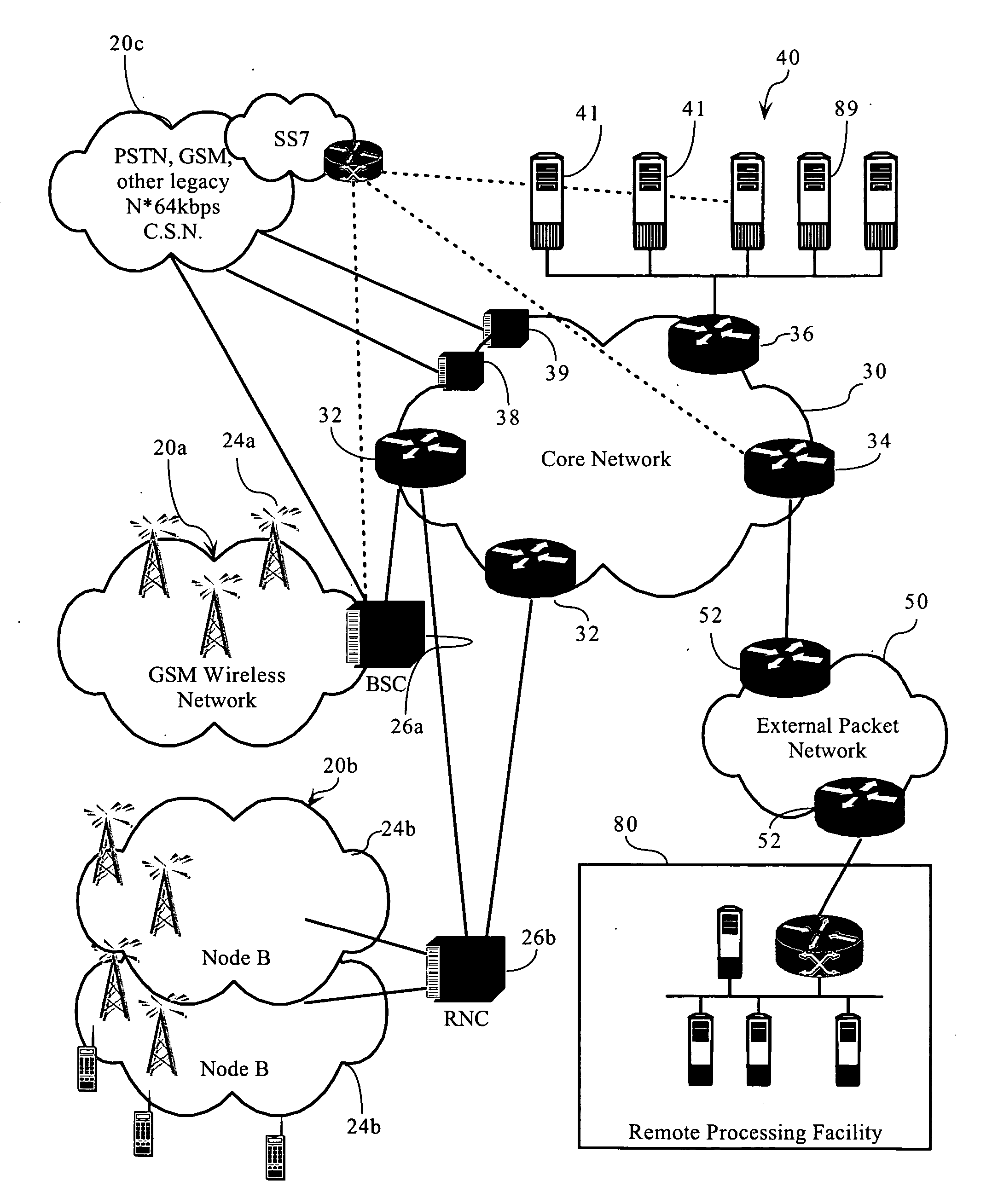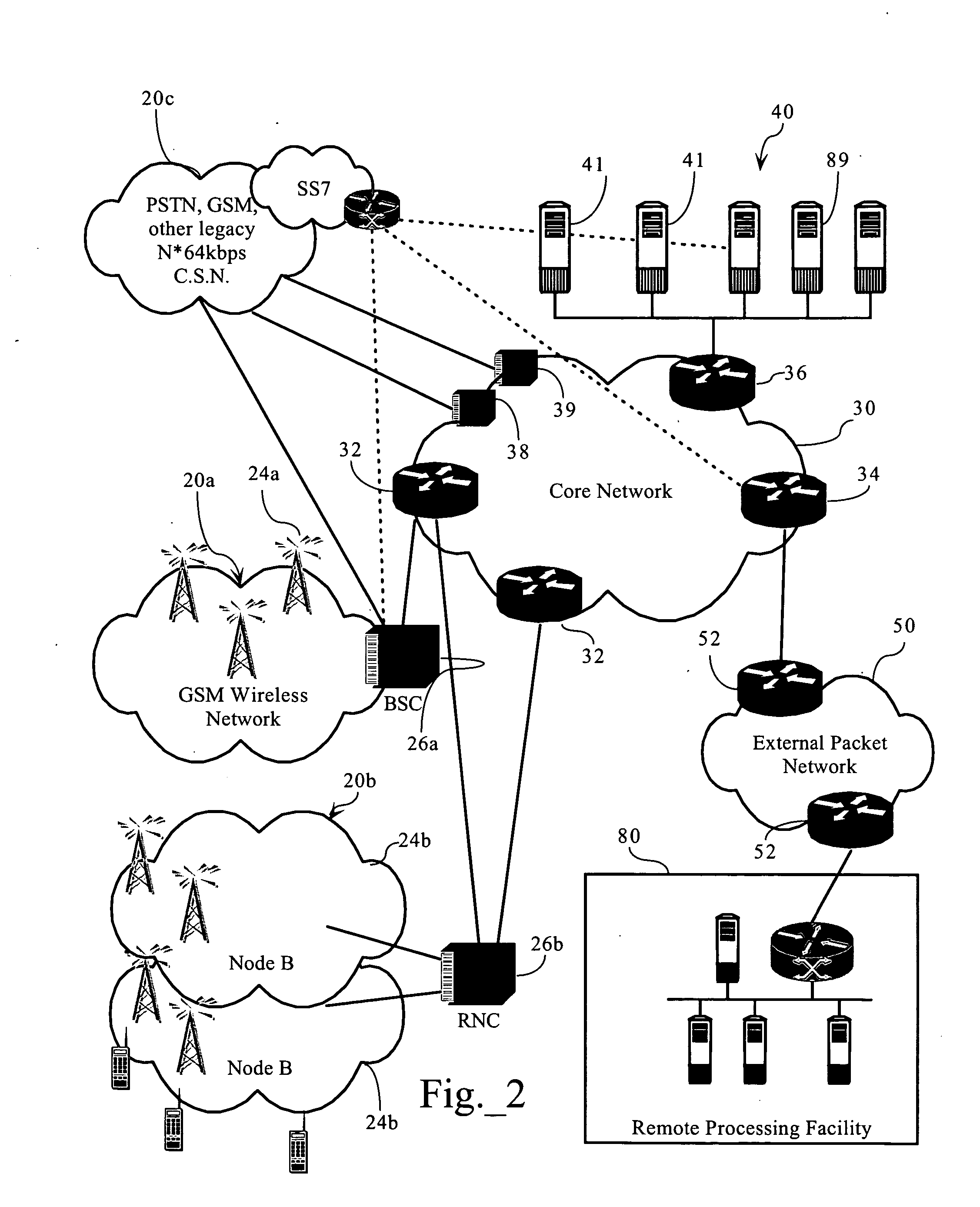Dynamically distributed, portal-based application services network topology for cellular systems
a dynamic distribution and application services technology, applied in the field of mobile system technologies, can solve the problems of affecting the presenting certain limitations and disadvantages for application developers, and disrupting the consistent “look & feel” of the interface provided to the handset user
- Summary
- Abstract
- Description
- Claims
- Application Information
AI Technical Summary
Benefits of technology
Problems solved by technology
Method used
Image
Examples
Embodiment Construction
)
[0017]FIG. 1 is a functional block diagram illustrating a Dynamically Distributed Portal Based Application Network Topology according to an embodiment of the present invention. As FIG. 1 illustrates, in one implementation, the present invention operates in connection with at least one wireless network 20, core network 30, and external packet data network 50.
[0018] As discussed more fully below, wireless network 20 enables one or more wireless mobile stations 22 to establish connection with remote devices, such as other mobile stations, POTS telephones, and computing resources on external packet data network 50, for the transmission of voice or other data therebetween. In one embodiment, wireless network 20 includes at least one base station 24 (or other radio transmit / receive unit) operably connected to a base station controller 26 (e.g., a Base Station Controller (BSC), a Radio Network Controller (RNC), etc.).
[0019] The present invention can be deployed in connection with one to...
PUM
 Login to View More
Login to View More Abstract
Description
Claims
Application Information
 Login to View More
Login to View More - R&D
- Intellectual Property
- Life Sciences
- Materials
- Tech Scout
- Unparalleled Data Quality
- Higher Quality Content
- 60% Fewer Hallucinations
Browse by: Latest US Patents, China's latest patents, Technical Efficacy Thesaurus, Application Domain, Technology Topic, Popular Technical Reports.
© 2025 PatSnap. All rights reserved.Legal|Privacy policy|Modern Slavery Act Transparency Statement|Sitemap|About US| Contact US: help@patsnap.com



